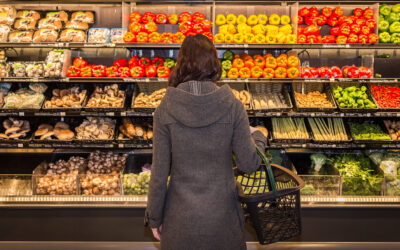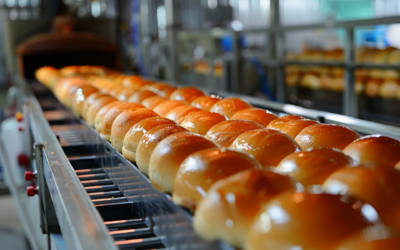Most of the manufacturers of fake meat have no interest in “competing” with those who produce meat conventionally; their vision, intent, or goal is more sinister than that. Among the “25 Claims In Support Of Meat Substitutes” 1 are these: (1) “Our vision is not to provide an alternative; it is to replace meat”; (2) “We intend to replace animals as a food production technology”; and (3) “Our company’s goal is to eliminate the need for animals in the food-chain by 2035”. And they expect to do it soon. Bonny et al. (2015), in Journal of Integration Agriculture, are so sure of its imminent success they predict that plant-based meat-alternatives (PBMAs) and cell-cultured meat-alternatives (CCMAs) will push conventional meat into the premium end of retail sales–and that real meat will have to compete at higher competitive retail prices.2
Others are much less optimistic. One prognosticator said, “The forecast for total real and alternative meat/poultry sales is $100 billion in 2021, and that PBMAs plus CCMAs will account for 2% (less than $2 billion) of the projected total.”3 Another said, “World demand for meat substitutes is expected to reach 6.7% of the real plus fake meat market.”4 A professor said, “Fake meat is a great theory on paper but its promises are disconnected from agricultural reality.”5 An economist said, “I don’t see alternative meat as a long-term threat to the meat industry; it definitely has a ceiling and will settle in the same market-share as Natural, Organic, Local, and Grass-Fed products.” 6
Max BurgersTM said, “Americans can help prevent catastrophic sea-level rise, droughts, and other consequences of climate change by reducing their annual consumption of beef by 95%; our goal is to have vegan burgers replace beef burgers in every second meal by 2022.” 7 Impossible FoodsTM claimed, “Our company was founded to replace animals; our manufacturing platform will enable us to recreate all animal products–including meat, dairy, and fish–using plants.”8 There’s a problem though. “Capturing the look and texture of cow’s milk with almonds, rice, or soy is simple compared to the complexity of meat; Fake milk is easy to make, yet hit the ceiling when they captured 10% of the total, overall, milk market.”9
PBMAs took off like a rocket. By March 2016: (a) Gardein TM was being sold in 22,000 retail stores, 5,000 restaurants, and 100 college-campus outlets; (b) Beyond Beef® was being sold in 19,000 grocery stores, >3,700 restaurants, and–via Sysco (a distributor)–thousands of food service operations; and (c) Impossible Foods was selling to >7,200 restaurants and 7,200 Burger-King TM QSRs. 10 Sounds great…but did it indicate that farm animals are being replaced? The “100 Hottest Food Trends For 2018” included both “real meat” and “real poultry.”11 Dan Murphy wrote, “Despite the media’s salivation over PBMAs, real meat and poultry still dominate foodservice; that’s because–at the end of the day–restaurants serve what sells, and veggie concoctions are window dressing.12 Even as plant-based diets gain traction, 2018 may well become known as “The Year Of Meat,” with Americans predicted to consume 222.2 lb of red meat and poultry during the calendar year–a record surpassing the previous high, set in 2004.13 (USDA in 2019 reported actual consumption was 222.4 lb). So, admittedly, CCMAs weren’t helping the cause in 2019 because, “Right now, a hamburger made from the Memphis MeatsTM process costs thousands of dollars.” The PBMA market is still growing but is still only a fraction of 1% of the overall meat market.14
In 2019, Dariush Ajami (Beyond Burger®) was resolute in saying, “Our goal is to perfectly replace animal meat with plant-based options.”15 Impossible Foods reiterated that “Our company’s goal is to eliminate the need for animals in the food chain by 2035.”16 But not all was going well, many consumers weren’t coming on board, some retailers were jumping ship, and financial experts were expressing doubt. A Harris Poll reported that nearly 75% of shoppers said they were unlikely to choose a plant-based patty over the real deal, and 80% would pass on lab-grown meat if it were available in stores.17 Power Of Meat 2019 reported that, of US consumers, 36% will “Absolutely Not” purchase PBMAs and 55% will “Absolutely Not” purchase CCMAs.18 Criticisms of PBMAs are rising: Consumers will closely scrutinize comparative prices, Ingredient Lists, nutrition profiles, and production practices.19 ChipotleTM announced that Beyond MeatTM and Impossible Foods products won’t fit in our food because of the processing it takes to make a plant taste like a burger; it wouldn’t match our ‘Food With Integrity’ principles.20 Beyond Meat products are getting booted off the menu at Tim HortonsTM; “ultimately, the product was not embraced by our guests”.21 Power Of Meat 2019 reported that only 18% of consumers said, “I am interested in PBMAs” and less–11.5%– said, “I am interested in CCMAs”.
People in the financial sector are generally adept at measuring business models. Beyond Meat reported $67 million in sales and $6.6 million in losses last quarter after a decade in business; with 70% of consumers preferring products without additives, Beyond Meat and all of these PBMA companies are positioning to be “nothing burgers”.22 To justify Beyond Meats’ present price ($150 per share) on the New York Stock Exchange, sales of product have to reach $22 billion by 2030; 2019 sales are $205 million (<1% of $22 billion).23 A 100-fold increase in sales in the next 10 years, when the PBMA price is 2.4 times that of a beef burger, is a tall order.23 On August 21, 2019, among the 10 largest increases in NYSE stock values were 4 meat and poultry companies (MarfrigTM, JBSTM, TysonTM, Sanderson FarmsTM); among the largest decreases was Beyond Meat (down 18.3%).24
Of present concern is the future of fake meat. Some things are changing. Supermarkets are putting PBMAs in the fresh-meat case (2% in 2016; 16% in 2018)25 hoping shoppers buy them by mistake and find out they like (or can tolerate) them. Beyond Burger finally was profitable in 3Q-2019 and 12 of the 16 PBMA companies had percentage increases in total sales in CY-2019 over CY-2018. 26 And, US retail sales of all plant-based food rose 11.4% in 2019 to $5 billion–of which $939 million was for PBMAs.27 Even so, PBMAs in the US now account for 2% of retail-packaged meat sales28 and 0.1% of all refrigerated/frozen meat sales globally.29 Investment bank UBS® forecasts a 28% compound annual growth for global PBMA sales taking the category from less than $5 billion in 2018 to $85 billion in 2030.30 Nevertheless, if we’re going to save the planet by getting rid of all meat animals, we have a hard row to hoe to replace 98% of the meat supply in the USA and 99.9% of the meat supply globally with PBMAs. A number of agricultural economists have predicted that the “ceiling” market-share for PBMA patties in US quick-service restaurants will be 10%.31
The most startling predictions relative to the future of fake meat is that of A.T. Kearney: Using information from United Nations, World Bank, A.T. Kearney Analysis, and expert interviews to forecast “Global Meat Consumption Trends,” they estimate that–by the year 2025–meat-sales market-shares will be 0% for CCMAs, 10% for PBMAs, and 90% for genuine meat (GM). 32 They further speculate that these proportions will change from 0-10-90 in 2025, to 10-18-72 in 2030, then 22-23-55 in 2035, and 35-25-40 in 2040…which suggests that 60% of all “meat” sales will be CCMAs plus PBMAs.32 They further speculate that genuine meat will lose even more of market share if the NestlesTM and TysonsTM of the world decide they want to put more of their corporate Research and Development resources to work on mimicking the properties of real meat.32
REFERENCES:
1Smith, Gary. 2020. Texas A&M University. January 20 Issue.
2Gyton, Georgi. 2015. GlobalMeatNews.com. April 21 Issue.
3Browne, Michael. 2018. Supermarket News. July Edition.
4Bennett, Chris. 2018. Drovers. August 13 Issue.
5Karisch, Brandi. 2018. Mississippi State University. August 18 Issue.
6 Peel, Derrell. 2018. Oklahoma State University. August Edition.
7Radke, Amanda. 2018. BEEF. June 27 Issue.
8 Phelps, Lisa. 2018. Prepared Foods. October Edition.
9 Ozimek, Adam. 2018. Moody’s Analytics®. August Edition.
10 Smith, Gary. 2020. Texas A&M University. May 23 Issue.
11 TheStacker.com. 2018. December 9 Issue.
12Murphy, Dan. 2018. Drovers. December 11 Issue.
13Radke, Amanda. 2018. BEEF. September 24 Issue.
14Demetrakakes, Pan. 2019. Food Processing. July Edition.
15Berry, Donna. 2019. Meat + Poultry. July 19 Issue.
16Gabbett, Rita Jane. 2019. Meatingplace. May 13 Issue.
17 Des Moines Register. 2019. October 1 Issue.
18Power Of Meat. 2019. March 26 Issue.
19 Specialty Food Association. 2019. Trendspotter®. December Edition.
20Welshans, Krissa. 2019. Feedstuffs. July 30 Issue.
21Shike, Jennifer. 2020. Pork Business. January 20 Issue.
22 Berman, Richard. 2019. The Washington Times. July 30 Issue.
23 Henderson, Greg. 2019. Drovers. July Edition.
24 Merill Lynch. 2019. Consumer Update. August 31 Issue.
25Meatingplace. 2020. April Edition.
26Meatingplace. 2020. March Edition.
27Plant Based Foods Association. 2020. Food Processing. April Edition.
28 Valigra, Lori. 2020. Food Quality & Safety. May Edition.
29James, Katie. 2019. Drovers. December Edition.
30 Kuhn, Mary Ellen. 2020. Food Technology. March Edition.
31 Lucas, Amelia. 2020. CNBC. January 14 Issue.
32Gerhardt et al. 2019. A.T. Kearney®. December Edition.



